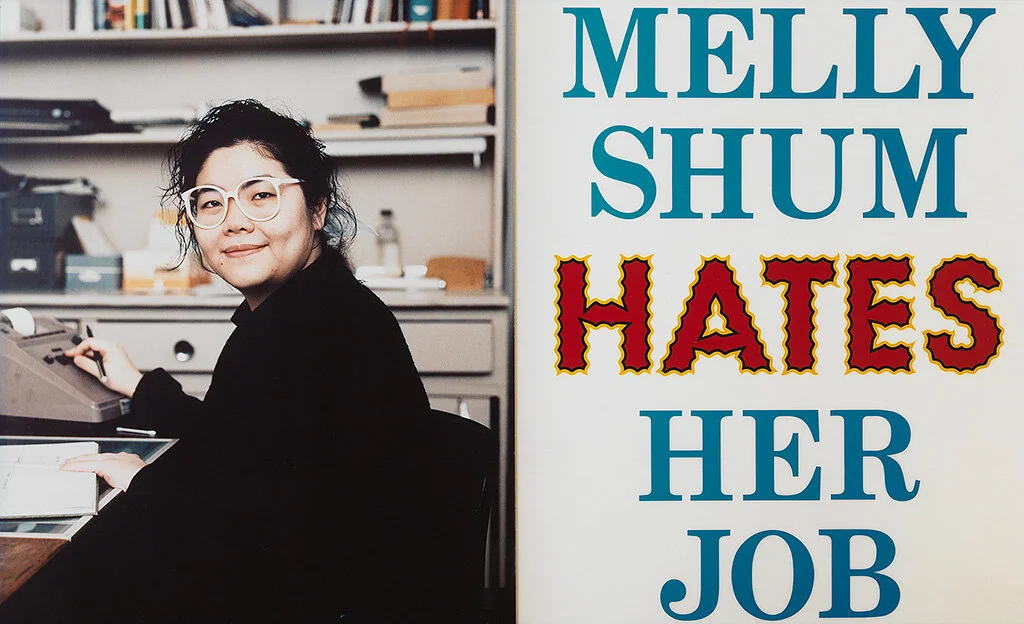Stir Cheat Sheet: 5 far-out artworks to see at the Vancouver Art Gallery's new fall exhibitions
Abstract illusions abound at Victor Vasarely and Op Art in Vancouver , while Uncommon Language contrasts and questions
Victor Vasarely, Planetary Folklore (Orion MC), 1964, screenprint on paper, Collection of the Vancouver Art Gallery, Gift of J. Ron Longstaffe, © SOCAN, 2020, Photo by Ian Lefebvre, Vancouver Art Gallery
Hungarian-French scientist and artist Victor Vasarely, one of the giants of the 1960s and ‘70s eye-teasing Op Art movement, is the focus of a new exhibit at the Vancouver Art Gallery.
And while the works may draw you in with their wild colour play and far-out space-age appeal, you’ll gain a strong new appreciation for some of Vasarely’s uplifting concepts of universality and cosmic interconnection.
The survey of his work is complemented by two other shows: Op Art in Vancouver, a look at how much influence the style had on this city’s strong contingent of abstract artists in the same decades (think Gordon Smith, Brian Fisher, Takao Tanabe, Michael Morris, Joan Balzar, and Bodo Pfeifer); and Uncommon Language, a group show of works from the permanent collection that critique and confound some of Vasarely’s idealistic notions about a universal geometric language.
Here are just five works to check out. (The VAG’s COVID measures are spelled out here.)
Planetary Folklore (shown above), Victor Vasarely, 1964
Here’s a work that shows how Vasarely obsessed about using geometric abstraction as an engaging, accessible visual language that could be universally understood. In the 1960s, he developed his Plastic Alphabet, a symbolic visual language based on “colours and shapes that could be combined in endless combinations on a grid”, VAG curator Bruce Grenville said on the virtual media tour, “a kind of visual Esperanto.” See if you can “read” it.
Victor Vasarely, VEGA-VA, 1968–69, tempera on paperboard, Collection of the Vancouver Art Gallery, Gift of the Estate of Kathleen E. Reif, © SOCAN, 2020, Photo by Ian Lefebvre, Vancouver Art Gallery
Victor Vasarely’s VEGA-VA, 1968-69
You can tell that this futuristic, perspective-skewing tempera-on-paperboard work came out right around the same time as Space Odyssey 2001, the moon landing, and countless advances in astrophysics and astronomy. “It’s clear that Vasarely saw the cosmos—a world of waves, fields, pulsars, and quasars—as the extended language of the universe,” Grenville observed.
Joan Balzar, Blue Neon, 1967, acrylic, wood, neon tubing, electronic transformer on canvas, Collection of the Vancouver Art Gallery, Gift of Alexander Cotter, Photo courtesy Vancouver Art Gallery
Joan Balzar’s Blue Neon, 1967, Op Art in Vancouver
Amid the West Coast artists influenced by Op Art, Balzar, who passed away in 2016, stands out not only as the only woman, but as one of the most unsung talents. Like Vasarely, the Vancouver School of Art alumna played with new materials like neon tubing, plastic, and electronic transformers, creating hard-edged, boldly coloured works, often playing with aggressive big “W” and “X” forms. Blue Neon shows one of the most distinctive things she did: integrate glowing, then-avant-garde neon right into her painting.
Ken Lum, Melly Shum Hates Her Job, 1989, chromogenic print, Collection of the Vancouver Art Gallery, Gift of Dr. Doug Foster, Photo courtesy Vancouver Art Gallery
Ken Lum’s Melly Shum Hates Her Job, 1989, Uncommon Language
Vancouver-raised art star Ken Lum’s well-known work has been in the news lately. It’s actually inspired the renaming of an entire art institution in the Netherlands. Yes, Rotterdam’s Witte de With Center for Contemporary Art will be known as the Kunstinstituut Melly from January 27, 2021 onward. The artwork here has been a celebrated fixture on the centre’s facade; its titular subject is set to take the spotlight, replacing the name of a Dutch naval officer who represented the harsher side of colonialism. The public favoured the idea of giving a nod to a female working-class anti-hero instead. As VAG assistant curator Zoë Chan pointed out on the tour, “The figure of universality is usually a white person; here we see a person of Chinese descent being represented as an icon.” The work is part of a larger series of portraits of racialized people, with the insights into who they are and what they’re feeling spelled out in purposely flashy, billboard-type fonts.
Allison Hrabluik, The Splits, 2015 (still), digital video with sound, 15 min. Collection of the Vancouver Art Gallery, Purchased with proceeds from the Audain Emerging Artists Acquisition Fund, Photo courtesy Vancouver Art Gallery
Allison Hrabluik’s The Splits (still), 2015, Uncommon Language
The Splits video is the result of the Vancouver artist asking people from all walks of life to do what they’re good at. She’s edited them together in a work that shows how similar we all are, hairstylists to gymnasts.You should check it out if for no other reason than the fact Hrabluik just earned a coveted 2020 VIVA Award from the Doris and Jack Shadbolt Foundation. Plus, The Splits sounds as cool as it looks: “You hear the pounding of feet, the pounding of meat, the pounding of pizza dough, and sound has a very important role beyond the visual,” said Chan.


















